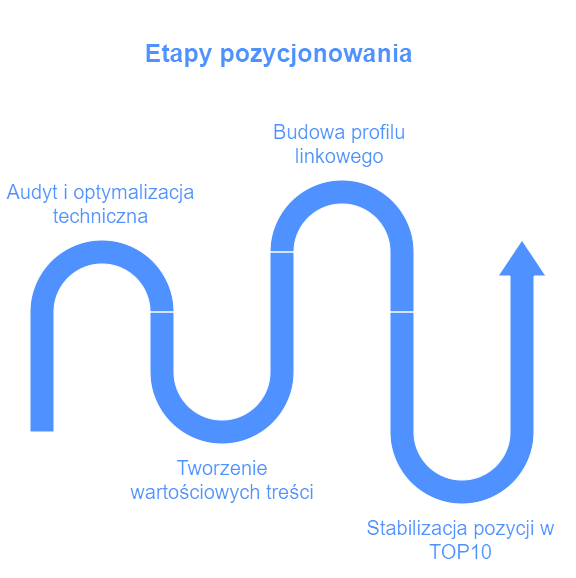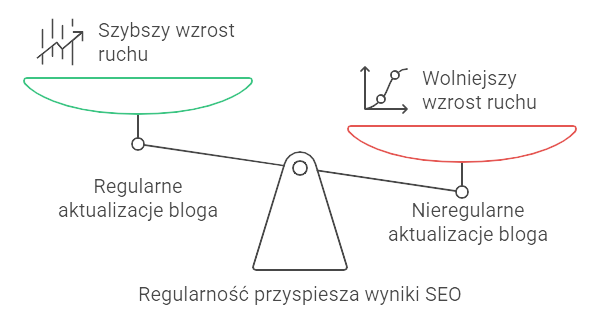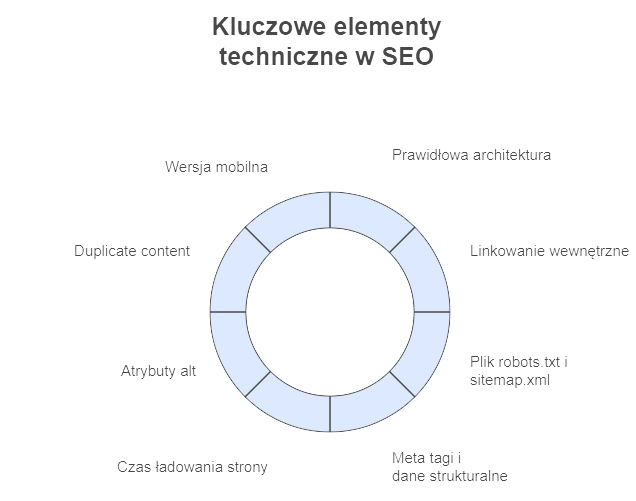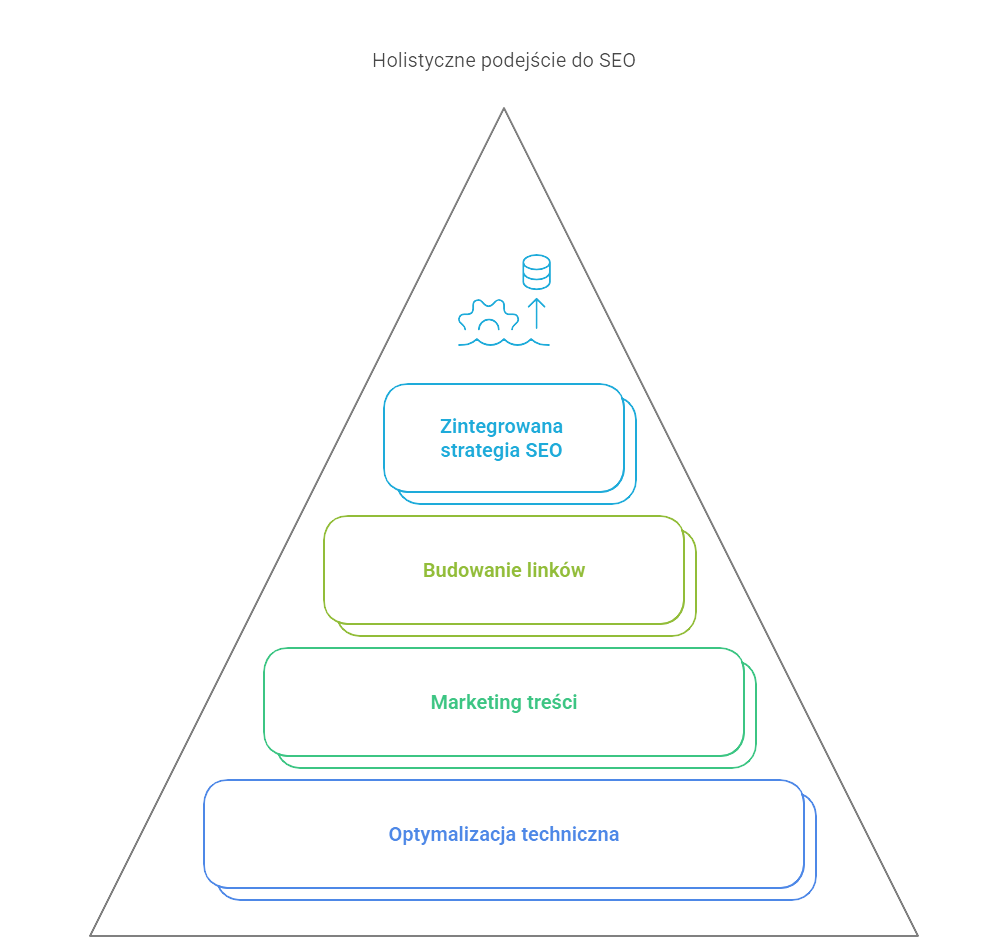Table of contents

How long does it take to position a website and when to expect SEO results? Many website owners ask themselves this question, especially when the first changes do not bring immediate results. While the wait can be frustrating, well-planned and consistently implemented SEO efforts can translate into truly lasting results – you just need to give them some time.
How long does it really take to position a website?
Questioning the specific duration of a site’s SEO is like asking how long it takes to get a stable position in the market – the answer is always: it depends 😉
According to Google’s Maile Ohye, it usually takes 4 to 12 months to see results from SEO efforts, depending on the improvements implemented and their quality. Google stresses that the time it takes to see changes in search results can range from a few hours to several months, depending on the nature of the modifications made. Search engine optimization (SEO) is a process that requires time and consistency. Factors such as the competitiveness of the industry, the quality of the content, the backlink profile and the technical condition of the site are crucial to the rate of results.
Although the first noticeable effects usually appear after a quarter of systematic efforts, the process requires a good dose of patience.
A number of factors influence the rate of results, among which the competitiveness of the phrases chosen plays a key role. Particularly in demanding industries such as the financial sector or real estate, the road to the top can even take years.
What are the realistic timeframes for different industries?
Realistic timeframes for SEO vary significantly depending on the industry and competitiveness. A Ahrefs’ 2024 survey, based on statements from more than 3,680 SEO professionals, indicates that the average website takes between 3 and 6 months to appear in the TOP50 search results. At the same time, a study conducted by Ahrefs in 2017, shows that only 5.7% of new sites reach Google’s top 10 within a year of publication.
This time varies significantly depending on the competitiveness of the sector:
- e-commerce – Positioning requires 6 to 12 months to achieve visibility in the TOP50 for moderately competitive phrases. For highly competitive niches (electronics, fashion), the time can extend to 18 months
- health and medical industry – Due to high E-E-A-T standards (Experience, Expertise, Authoritativeness and Trust) of 9 to 18 months to achieve significant results in TOP50, for long-tail phrases the period may be shorter: 6-9 months
- local services (restaurants, stores, craft services) – In the case of less local competition, results can appear after just 3-4 months
- finance and insurance – One of the most challenging industries – a period of 8-18 months to achieve TOP50
- tourism and travel – The average time to achieve visibility in TOP50 is 6-12 months, and for competitive general phrases up to 18 months
- education and e-learning – Average time to achieve visibility in TOP50 is 6-12 months

Estages of SEO and their approximate duration
The SEO process can be divided into several key stages:
- Audit and technical optimization: 1-3 months (depending on the size of the site)
- Creation of valuable content: 3-6 months of regular work
- Building a link profile: 3-8 months of regular work
- Stabilization of position in TOP10: The final stage, where the effects of previous actions begin to produce lasting results

Why positioning is a long-term process?
Positioning takes a long time because of the complexity of the process and the need for systematic action. It is impossible to achieve spectacular results overnight, and a number of factors contribute to this.
- processing time by Google’s robots – indexing of new content and in-depth analysis of emerging backlinks,
- consistent position building – regular creation of valuable content and acquisition of links from trusted sources,
- technical optimization – modifications to the site’s code, improving the structure and ensuring fast loading,
- sustainability – avoiding aggressive actions that can trigger Google filters,
- competitiveness of the industry – the impact of keyword saturation and competitor activity on the timing of results.
It usually takes six months to a year of systematic efforts to develop lasting results. Nowadays, the website must also be adapted to the mobile-first standard, which is one of the key elements of the positioning processa.
What factors influence positioning time?
Page positioning time depends mainly on industry competitiveness, domain age, technical quality of the site, and content and links. How can each factor affect the process of gaining visibility in the SERPs?
Competitiveness of industry and region of operation
This is the most important factor affecting the time to achieve results. The more competition, the more work and time it takes to break into the TOP10.
- large cities and industries with high competition (such as real estate in Warsaw) may require 12-24 months of systematic efforts.
- smaller local markets allow for faster initial results – often after just 3-4 months.
Domain history and Google trust
Google trusts sites with history and authority faster.
- older domains with a good reputation achieve visibility faster – refreshing your SEO strategy can yield results in as little as 2-3 months, and stable positions for competitive phrases can be achieved after 4-5 months.
- new domains need to „earn” trust – building positions from scratch may require 6-8 months for first results, and a stable presence in the TOP10 for major phrases may take 12-18 months.
Content quality and content strategy
Regular, valuable content is a strong signal to Google. The more often unique content is published that is tailored to the user’s intent, the faster you will see an increase in visibility. Not only the quality, but also the frequency of publication is important – regular updates increase the chances of a faster increase in visibility.

External link profile (link building)
- backlinks from credible sources build domain authority.
- regular acquisition of quality links per month can reduce SEO time
Page technical optimization
- key elements – fast loading speed, responsiveness, correct HTML structure, no duplicates.
- technical optimization is the foundation – its absence slows down all other activities. A site without technical errors and with a good structure loads faster, performs better and is easier to index by Google robots.
Scale and size of the project
- large store (2000+ products) – technical optimization alone, including category structure, meta tags and product descriptions, among others, can take about 2-6 months. The first noticeable results appear after 8-10 months.
- small store (up to 100 products) – Basic optimization takes 1-2 months, and the first results may be visible after 4-6 months.
For online stores, the following general timeframes can be adopted:
- Small e-shops: about 6 months
- Medium platforms: up to 12 months
- Large marketplaces: up to 24 months

How does the competitiveness of an industry determine the rate of results?
The pace of SEO results is directly dependent on the level of competition in the industry – in niche sectors, the first results are visible after a few months, while in competitive industries it can take up to a year and a half.
The following factors influence the strength of competition in SEO:
- the number of companies competing for high search engine positions,
- the potential and quality of competing sites,
- the budgets allocated to SEO activities,
- the quality of content on rivals’ sites,
- the link profiles of competing domains.
Sectors such as banking, insurance and real estate are particularly demanding. In order to break into the top 10 results, it is necessary to systematically invest in high-quality content and link facilities. It is also necessary to focus on long tail phrases and perfect technical optimization of the site.
The situation is completely different in niche industries, where competition is much less. Here there are not such exorbitant requirements for domain parameters, and positioning goes more smoothly. The process of content creation and optimization is also easier.
Remember, however, that the competitive landscape is dynamic. Therefore, the key to success is to constantly monitor the actions of your competitors and be able to adapt your strategy to changing market conditions.
How does the technical state of a website affect positioning time?
The technical state of a website has a big impact on SEO time – serious technical errors can extend the process by up to a couple of months.
- Load speed – at over 3 seconds we lose about 32% of potential visitors, Google considers loading speed an important ranking factor.
- Incorrect implementation of HTML tags can cause –
- hindered interpretation of content by search engine robots
- problems with proper content hierarchy, making it difficult for Google’s algorithms to assess the importance of information
- duplication of content resulting from misdirects or incorrect canonical tags
- incorrect site architecture, leads to:
- hindering the process of crawling (crawling) the site by Google’s robots
- problems with indexation of all subpages, especially those deeper in the structure
- improper flow of link juice (link power) between subpages
- creating ghost pages to which no internal links lead
Among the most important technical elements requiring special attention are:
- proper meta tags,
- thought-out header structure,
- optimized images,
- proper redirects,
- complete compatibility with mobile devices.

Regular technical reviews allow you to quickly catch and correct errors that occur. During a professional SEO audit, specialists usually find more than a dozen significant technical faults that directly affect the effectiveness of SEO efforts.
When do the first SEO effects appear?
The first effects of website positioning can be observed after just a few weeks, when we notice mainly a higher number of subpages in Google’s index and the appearance of the site in search results for phrases from the so-called long tail.
- 1-3 months – gradual increase in positions for less popular keywords and first organic entries from low-competitive queries,
- 6 months – reaching maturity of SEO efforts and stabilization of search engine positions,
- after 6 months – significant increase in organic traffic and visibility for competitive phrases.
Rate of results depends on the following factors:
- competitiveness of the industry,
- initial technical condition of the site,
- intensity of ongoing activities,
- large amount of invested funds,
- domain history.
Progress in SEO efforts can be monitored through specialized analytical tools that provide data on the increasing number of phrases in the top results, increasing organic reach, improving positions for strategic keywords, and increasing conversion rates from natural traffic.
What can you achieve in the first 3 months of positioning?
- improved visibility in Google – most long tail phrases in the top 50, increase in the position of the main keywords,
- technical optimization – elimination of errors, speeding up the site, optimization of meta data,
- development of content: new texts – refreshing of materials, expansion of site architecture,
- strengthening of link profile – acquisition of valuable links, removal of harmful backlinks.
All these actions translate into an increase in natural traffic. More users come to the site from search engines, sub-pages are better indexed, and the bounce rate decreases noticeably. These promising results lay the foundation for further optimization and systematic increase of the site’s visibility.
What results to expect after 6 months?
After 6 months of systematic SEO, you can expect increased visibility in Google and a significant increase in organic traffic. Up to half of the key phrases hit the top ten results, especially in industries with moderate competition.
- increase in organic traffic,
- double the number of phrases for which a site is visible in search,
- increase in conversion rate from organic traffic,
- increase in number of indexed pages,
- improve technical performance in analytics tools
The pace at which results are achieved depends largely on the competitiveness of the market. In niche industries, we can get to the top of the results relatively quickly, while in demanding sectors the process can take up to a year. Invariably, however, the key to success is consistent implementation of the SEO strategy and attention to the quality of the modifications made.
How to accelerate the effects of SEO?
The fastest SEO results for your website will be achieved by working simultaneously in the areas of technical optimization, content marketing and link building.
Particular attention should be paid to guest publications on recognized industry portals, which not only strengthen the authority of the domain, but also build an expert image. Remember that you will achieve the best results by combining all these elements into a coherent strategy, systematically monitoring the effects and adjusting actions to changes in search engine algorithms.

Which on-site SEO actions bring the fastest results?
Improving page load speed, implementing an SSL certificate or fixing indexing errors often results in noticeable position improvements in as little as 2-4 weeks. Also, implementing a schema.org data structure can yield quick results in the form of increased visibility in search results by displaying enhanced results (rich snippets).
For content, updating existing but poorly optimized high-potential pages often yields faster results than creating entirely new pages.
A well-thought-out internal linking structure is of paramount importance for site visibility. It is worth taking care of intuitive navigation, meaningful links between subpages and aptly chosen anchor texts.
However, it is important to remember that even these „quick wins” in SEO usually require several weeks, and the full effect of all actions is revealed only in the long term.
What errors can slow down the SEO process?
The most common mistakes that slow down a site’s SEO are technical shortcomings, poor on-page optimization, inadequate content, improper linkbuilding and indexing problems.
- technical shortcomings – excessively long page load times (over 3 seconds), inadequate image compression, underdeveloped HTML and CSS code, and lack of responsiveness,
- poor on-page optimization – duplicate meta tags, ill-considered header hierarchy, faulty redirects and inactive internal links,
- inadequate content – articles that are too short (less than 300 words), duplicate content, lack of keyword strategy and infrequent updates,
- improper linkbuilding: acquisition of links from blocked sites, artificial backlink profile, especially suspicious is too fast link acquisition, especially from non-topically related sites.
- indexing problems – misconfiguration of robots.txt, incorrect XML maps and bad settings in Search Console.
An inappropriate approach to content can also sabotage our efforts. Laconic articles of no more than 300 words do not inspire trust. Duplicate content and lack of a thoughtful keyword strategy undermine search engine visibility, as do sporadic updates to the site.
Summary
Success in SEO is the result of long-term efforts and consistent work on all aspects of the site – from its architecture to quality content to sustainable link building. Remember that SEO is not a one-time investment, but an ongoing process that requires regular updates and adaptation to changing search engine algorithms.
.
Was the article helpful?
Rate our article, it means a lot to us!
Let's talk!
Specjalistka SEO z 6-letnim doświadczeniem w branży digital marketingu. Łączy analityczne podejście z kreatywnością, tworząc strategie SEO, które realnie wspierają rozwój biznesu. Specjalizuje się w technicznym SEO oraz budowaniu strategii contentowych. W pracy ceni testowanie nieszablonowych rozwiązań, które pomagają jej patrzeć na SEO z różnych perspektyw. Prywatnie miłośniczka kuchni roślinnej i dźwięków, które wykraczają poza mainstream.